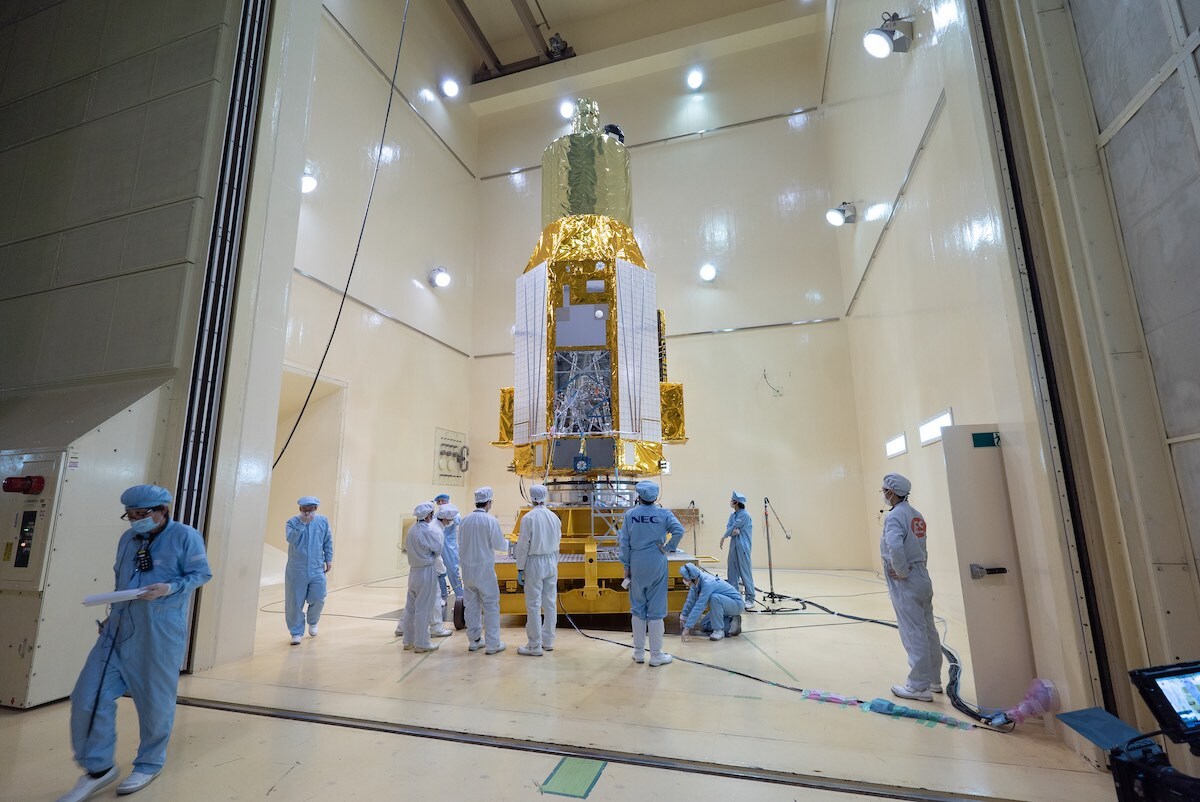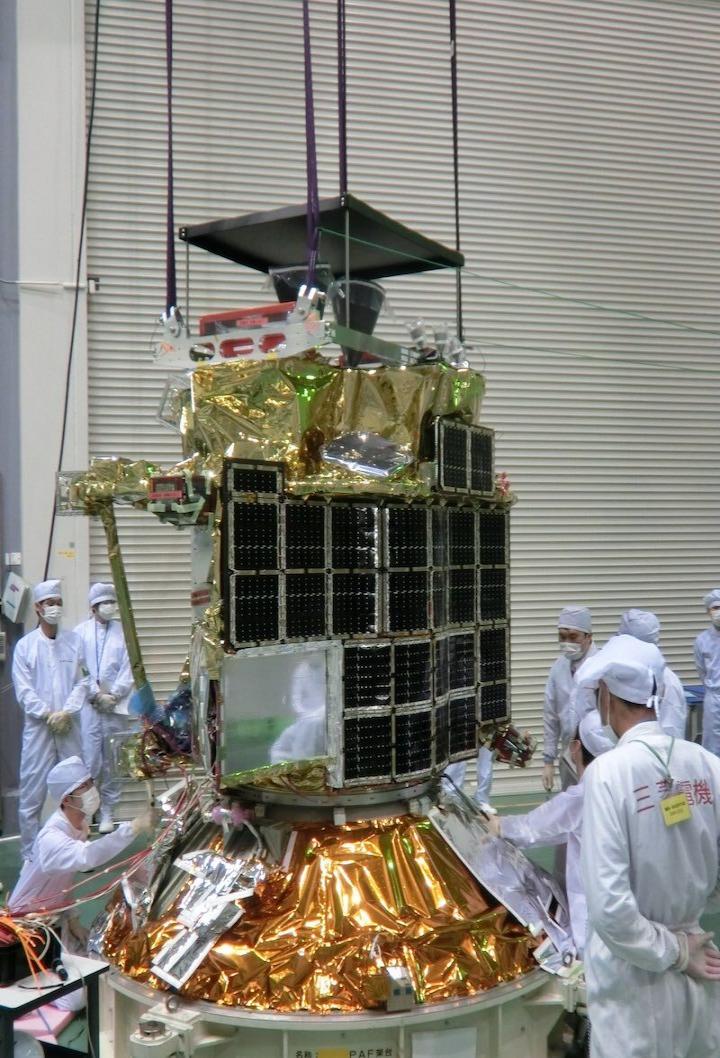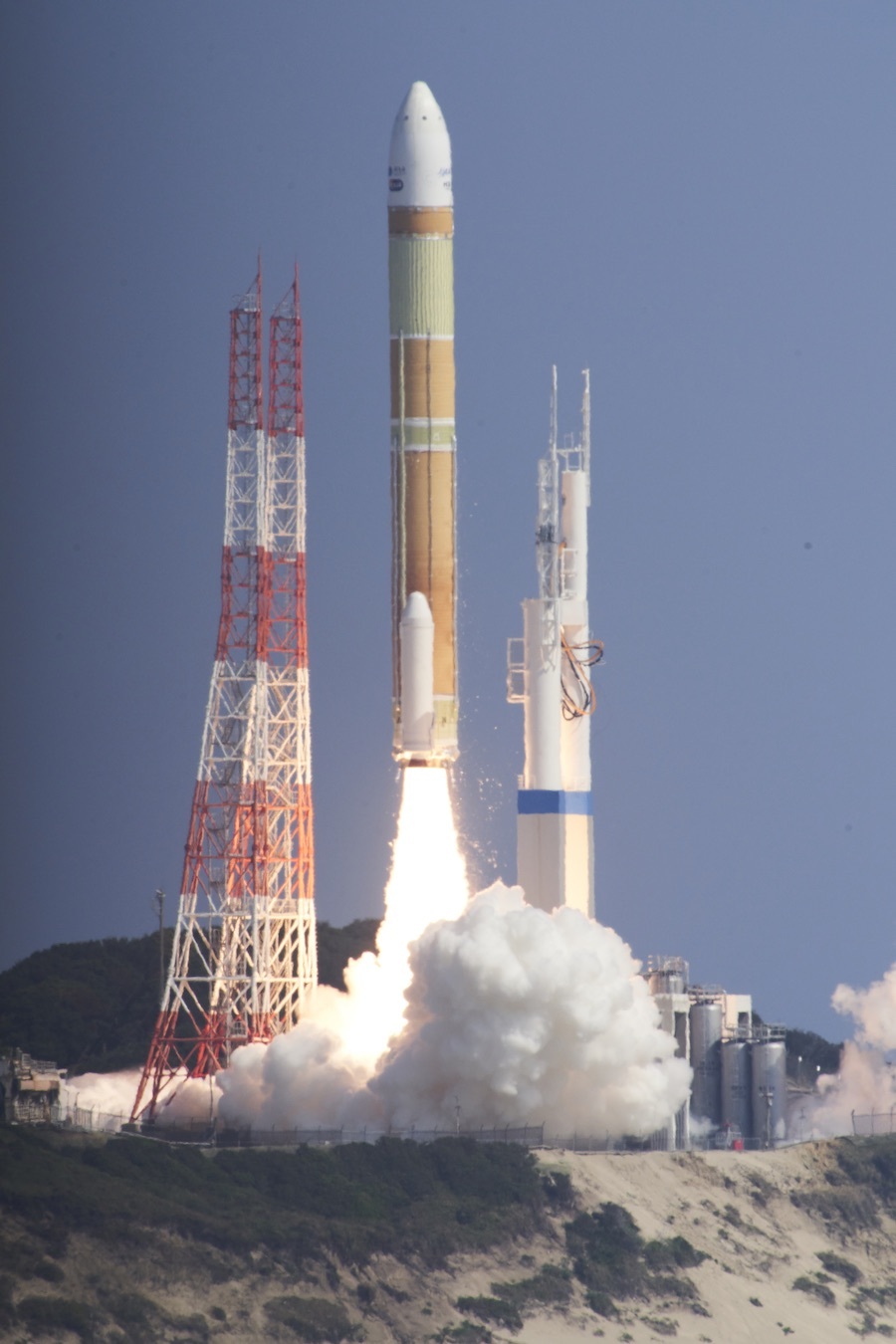13.04.2023

The launch of a Japanese X-ray telescope and robotic lunar lander has been delayed to no earlier than August, and the launch schedule for another Japanese mission to return samples from a moon of Mars is in doubt as engineers investigate the failure of Japan’s first H3 rocket last month.
The X-ray Imaging and Spectroscopy Mission, or XRISM, and the Small Lander for Investigating Moon, or SLIM, were supposed to launch together later this spring on an H-2A rocket from the Tanegashima Space Center in Japan. But the Japan Aerospace Exploration Agency announced March 31 that the launch would be delayed until August, at the earliest.
JAXA said engineers conducted a detailed assessment of the H3 launch failure’s impact on the H-2A rocket. The H3 is Japan’s new flagship launch vehicle designed to eventually replace the H-2A, which has flown 46 missions, including 40 straight successful flights.
The H3’s hydrogen-fueled upper stage engine failed to ignite a few minutes after liftoff on the rocket’s inaugural test flight March 6 (U.S. time). The rocket and its payload — a Japanese Earth-imaging satellite — crashed back to Earth before entering orbit.
The H-2A shares a similar upper stage with the H3 rocket.
The XRISM mission is a replacement for Japan’s Hitomi X-ray astronomy satellite, which failed a month after its launch in February 2016. NASA and the European Space Agency are partners on the Japanese-led XRISM mission.
The XRISM mission is “going to perform high resolution spectroscopy in X-ray and is expected to open new horizons into astronomy,” said Masaki Fujimoto, deputy director general of the Japan Aerospace Exploration Agency’s Institute of Space and Astronautical Science. “It’s a large-scale Japan-U.S .collaboration as well as a collaboration with the Europeans on this mission.”

“SLIM will be our first step in JAXA’s lunar landing program,” Fujimoto said last month in a presentation to the National Academies’ Space Science Week. “It will perform a pinpoint landing with a precision of 100 meters-ish … Once we establish these technologies, we deploy a series of landing missions that will constitute our contribution to Artemis.”
Artemis is the NASA-led effort to return humans to the moon as a stepping stone to eventual crew missions to Mars.
“I’m sorry I cannot be too positive about this,” Fujimoto said. “It’s really too bad that these nice missions, with contributions from the U.S. and Europe, are really ready to go, but will likely have to be delayed because of whatever is happening, the details of which I really don’t know.”
“My intention here is to maintain our transparency with our partners,” Fujimoto said. “We will make use of the time that became available due to this temporary setback so we can be fully ready whenever we are back on track.”
Fujimoto said another Japanese space science project, the Martian Moons Exploration mission, may also face a launch delay. It is currently scheduled for launch in August 2024 on an H3 rocket, the same type of launcher that failed in March on its first test flight.
The mission, known as MMX, is a follow-on to Japan’s successful Hayabusa 2 asteroid sample return mission, which brought specimens collected from an asteroid Ryugu back to Earth in 2020. MMX will land on Phobos, the larger of two asteroid-like moons of Mars, and attempt to collect rock samples for return to Earth in 2029.

“We were thinking that thanks to the big success of Hayabusa 2, we were really catching the wind nicely and then what happened is … the launch failure of the H3 launcher,” Fujimoto said. “The H3 launcher has a brand new first stage, which functioned quite well. But unfortunately, the second stage was not ignited and that led to the failure of the H3 launcher.”
“MMX has been planned to be launched in 2024 by this new launcher,” he said. “And to be honest, I really don’t know what’s going to happen to this timeline. We know nothing yet.”
Tomohiro Usui, a Japanese planetary scientist, said Tuesday that development and testing of the spacecraft for the MMX mission is continuing in Japan to preserve the opportunity to launch next August, while rocket engineers continue investigating the H3 launch failure.
Quelle: SN

